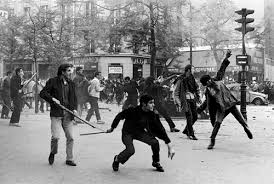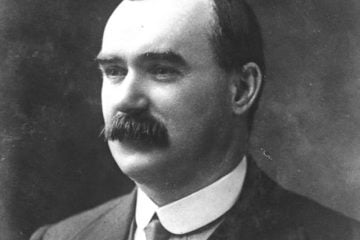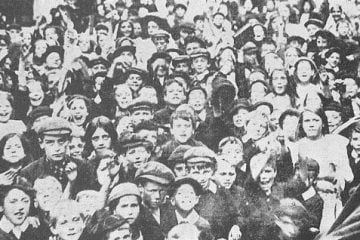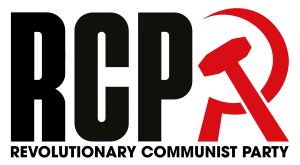The Russian Revolution was the most important event in history, where for the first time the workers came to power and swept out all the landlords and capitalists. That revolution was led by the Bolshevik Party under Lenin and Trotsky.
However, due to the revolution’s isolation in a backward semi-feudal country, surrounded by hostile imperialist powers, the revolution suffered a bureaucratic degeneration. After Lenin’s death, a bureaucracy seized power, at whose head was Joseph Stalin. He consolidated his power by eliminating all opposition, including the Left Opposition of Trotsky.
Trotsky, who opposed Stalinism to the end, wrote a biography of Stalin, to explain Stalin’s rise from obscurity to become the dictator of the Soviet Union. However, the book was never finished as Trotsky was murdered by a Stalinist agent in August 1940.
The first complete edition of Trotsky’s unfinished biography of Stalin has just been published by Wellred Books. It was recently launched in Mexico by Alan Woods, the editor, and Esteban Volkov, Trotsky’s grandson in the place where Trotsky was murdered.
As Trotsky explained, a “river of blood” separates Stalinism from Bolshevism. An understanding of Stalinism and its counter-revolutionary nature is vital for all socialists and revolutionaries. The Marxist analysis contained within the book will be key for anyone attempting to understand either the USSR or the role of Stalin.
Stalin’s dictatorship in the USSR can be characterised as a degeneration workers’ state, where the economy is nationalised, but the working class has been denied control by a monstrous regime run by bureaucratic and dictatorial methods.
The Bolsheviks did not believe you could establish “socialism in one country”, especially in backward Russia, but was the beginning of a world socialist revolution. Unfortunately, the revolutions in other countries were betrayed by their reformist leaders.
The failure of the German revolution in 1918 left the USSR completely isolated in the world. With no support from any countries, the Russian Revolution was in a “besieged fortress”. At the time, 70% of Russians were illiterate. Therefore new regime had to rely upon many officials from the old Tsarist regime. Many of the worker Bolsheviks were killed in the civil war waged the White counter-revolutionary armies backed by foreign intervention.
This meant that a layer of bureaucrats began to creep back. Many of these careerists had no interest in seeing the success of a genuinely socialist revolution. This was the beginning of a period in which economic growth continued rapidly thanks to the planned economy (instead of a capitalist economy), but where the grip of the working class was increasingly weakened. With more defeats internationally, the bureaucracy strengthened its hold on power.
The masses were tired and weary after years of war, civil war and exhaustion. The Bolsheviks looked to world revolution to save them. Stalin, who was a second rate figure, reflected the interests of the bureaucrats. After Lenin’s death, Stalin managed to wheedle himself into power at the head of a growing bureaucratic reaction. Instead of world revolution, he put forward “socialism in one country”, which suited the bureaucrats. Through this base of support he consolidated his rule and purged the heroes of the revolution who opposed him, including, most famously, Leon Trotsky who he exiled and murdered.
Stalin’s mediocrity reflected the interests of the officialdom. Stalin was created by the machine. He became their figure head, creating a totalitarian regime in the USSR and in the leadership of the so-called Communist Party. The Communist Parties were purged and became a mouthpiece for the Moscow bureaucracy. The result of Stalin’s dictatorship, documented by Trotsky in his book, was not the establishment of socialism but a totalitarian caricature.
Whilst it would be easy to attribute the subsequent degeneration of the Russian Revolution to the cruel and power obsessed nature of Stalin’s character, this is a flawed analysis. As Marx says, whilst individuals create their own history, they do not act as “free agents”, but are moulded by the objective conditions around them. It was the isolation of the revolution under terrible backward conditions that produced Stalinism. If the revolution had succeeded in the West, the Russians would have been given assistance and the bureaucratic deformations eliminated. But the isolation sealed the fate the Revolution.
In terms of what this means for 21st century revolution, it is vital that we oppose any bureaucratic imposition. We are fighting for a workers’ democracy, where there is complete control by the working class. There will be no one party state, there will be free elections, the right of recall, no official on higher than workers’ wages and the rotation of all functions between different people.
Socialist revolution in the West be completely different to Russia in 1917. The conditions in Russia of widespread illiteracy and economic backwardness don’t exist. There is a very high cultural level, where people can participate fully in the running of society. We do not need a bureaucracy as much of the economic organisation of society can now be computerised. Additionally the interconnectedness of the modern world makes a revolution in one country far more likely to spread rapidly around the world.
On this basis, with a correct leadership, the world revolution is now far more likely to succeed and develop than was the case in the 20th century. Marxists can have high hopes therefore for the success of the world revolution which is already beginning to take shape amongst the working classes in every country.
by Ed Rosier, Manchester Marxists



